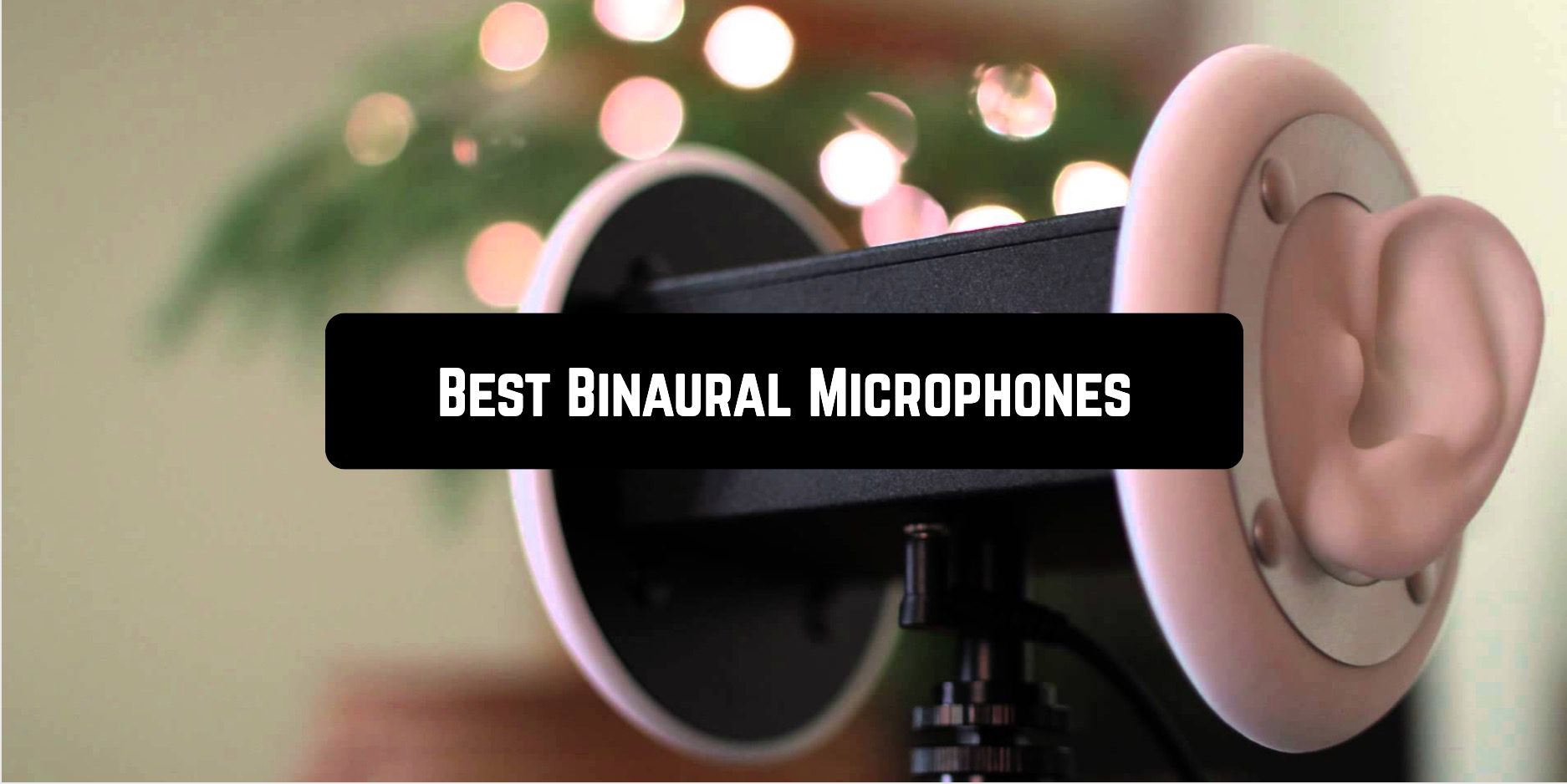

- #Blue binaural microphone android#
- #Blue binaural microphone pro#
- #Blue binaural microphone Bluetooth#
There are microphones located on both the left and right sides of the headphones opposite the eartips. They are made of white plastic and come with three sizes of silicone eartips and three sizes of memory foam eartips (small, medium, and large). Hooke Verse headphones look like other ear-hook style in-ear headphones.

GoPro cameras (Hero 3 and higher) using provided Hooke Recording cable.
#Blue binaural microphone pro#
DSLR cameras, mixing consoles, pro video/audio, computers, field recorders using the provided Hooke Recording cable.
#Blue binaural microphone Bluetooth#
#Blue binaural microphone android#
Android Lollipop (Android 5.0) or higher using Bluetooth connection and Hooke Audio app.Continuous 3D Audio Record: 8 – 9 Hours.Lossless wired binaural 3D audio recording to GoPro 4,5,6,7 and Session, DSLRs with external mic inputs, field recorders, computers, mixers, Pro Tools and more.Bluetooth: 5.0 (according to the Hooke Audio website) or 4.1 (according to the printed Hooke Verse User Guide).Proprietary Hooke Audio 16 bit 48 kHz stereo Bluetooth recording codec.

Stereo recording is not capable of capturing these ITDs and ILDs. These things happen naturally as a person listens, generating their own ITDs (Interaural Time Differences) and ILDs (Interaural Level Differences). Stereo does not factor in the natural ear spacing or “head shadow” of the head and ears. With binaural, a listener can localize sound sources in front of them, behind them, above and below. Stereo audio allows for localization to the left and right upon playback. When a microphone is placed within the pinnae of each ear, a recordist is capable of recording audio identically to the way they hear it.īinaural sound is not to be confused with conventional stereo sound. The Hooke Verse allows the user to capture 3D sound (binaural audio) either as an audio recording or as a video + audio recording using the Hooke Audio app.īinaural audio must be recorded with a binaural microphone.Ī binaural microphone consists of two omni directional microphones wherein one mic is positioned very precisely within each ear. The Hooke Verse is a wireless (Bluetooth) in-ear headset that contains binaural microphones, one on the left and one on the right side of the headset.

The drawback for me is that they, like other hook-type in-ear headphones, are uncomfortable, don’t fit my ears well, and fall out when moving around. When testing them, they were WORLDS better than my phone’s video/audio recordings using mono (1-channel) audio. The Hooke Verse headset records binaural (2-channel) audio giving the user a 3D sound experience. Hooke Verse by Hooke Audio aims to rectify the issue. However, those recordings were always lackluster because the sound captured by my phone was always a fraction of what my real-life experience had been. REVIEW – Recording my kids’ performances has always been important to me. If you buy something through the links on this page, we may earn a commission at no cost to you. As a general rule, for true binaural results, an audio recording and reproduction system chain, from the microphone to the listener's brain, should contain one and only one set of pinnae (preferably the listener's own), and one head-shadow.We use affiliate links. For listening using conventional speaker-stereo, or MP3 players, a pinna-less dummy head may be preferable for quasi-binaural recordings such as the sphere microphone or Ambiophone. Because loudspeaker-crosstalk with conventional stereo interferes with binaural reproduction (i.e., because the sound from each channel's speaker is heard by both ears rather than only by the ear on the corresponding side, as would be the case with headphones), either headphones are required, or crosstalk cancellation of signals intended for loudspeakers such as Ambiophonics is required. Conventional stereo recordings do not factor in natural ear spacing or " head shadow" of the head and ears, since these things happen naturally as a person listens, generating interaural time differences (ITDs) and interaural level differences (ILDs) specific to their listening position. The term "binaural" has frequently been confused as a synonym for the word " stereo", due in part to systematic misuse in the mid-1950s by the recording industry, as a marketing buzzword. Method of recording sound Neumann KU 100 microphone used to record binaural sound


 0 kommentar(er)
0 kommentar(er)
